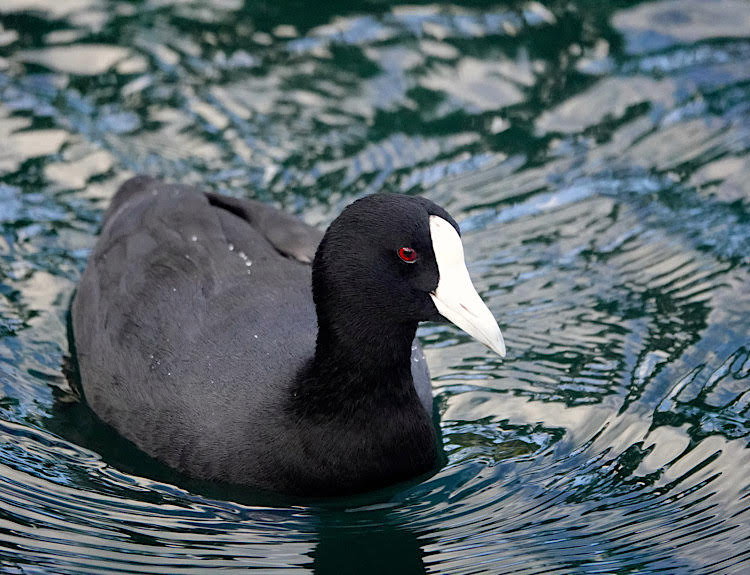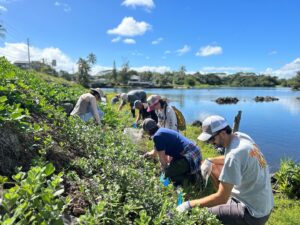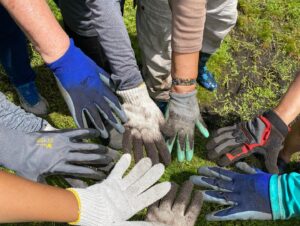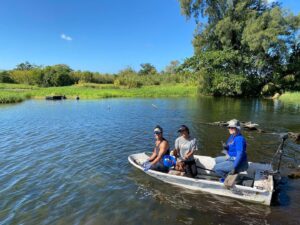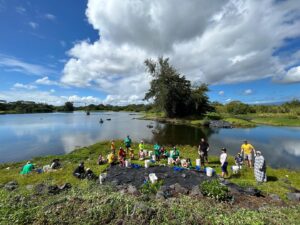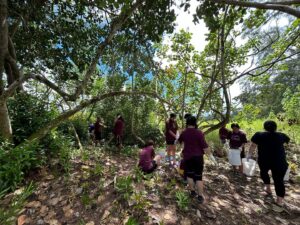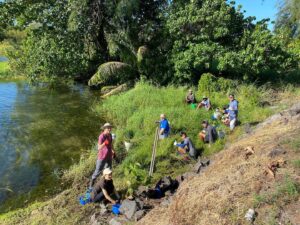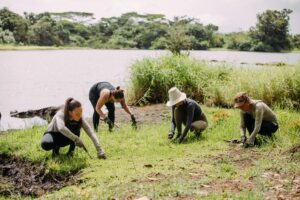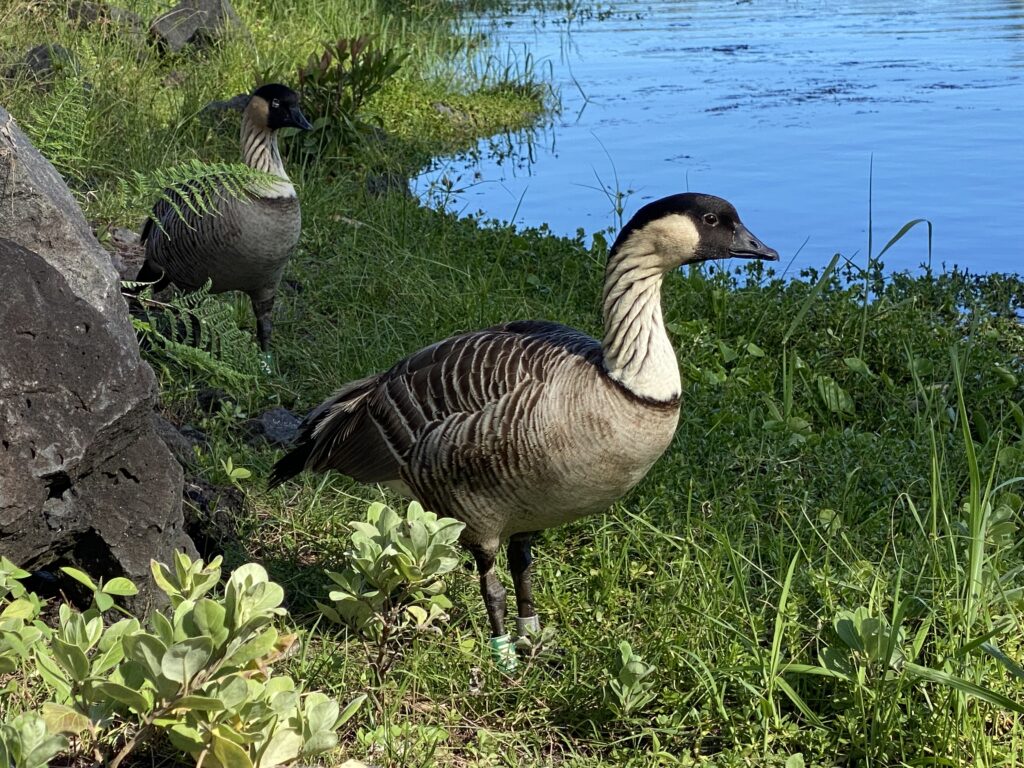What is a coastal wetland?
Coastal wetlands are transitional ecosystems where land meets the sea, regularly or seasonally flooded by fresh, brackish, or salt water. These areas support a rich diversity of plant and animal life specially adapted to wet soils, varying water salinity, and changing water levels.
What is an estuary?
Estuaries form where watersheds meet the ocean, blending freshwater from the land with saltwater from the sea. These dynamic ecosystems—where river flows and ocean tides converge—support a rich web of life, providing food and shelter for a wide range of species, including humans. At our site, the estuary is fed by freshwater springs, adding to its unique character and ecological richness.
Reviving Wetlant Habitat
Hawaiʻi Island has lost approximately 75% of its historic low-elevation wetlands, primarily due to infill and development. Much of the remaining wetland habitat is now degraded by invasive, non-native plants, with the greatest loss occurring in Hilo. In response, we are working to restore vital habitat for threatened and endangered native birds, as well as migratory species, at the 51-acre Lokowaka Pond complex in Hilo.
Reviving estuary & loko i‘a
In Hawai‘i, loko i‘a—traditional fishponds—are ancestral technologies designed to work with estuarine systems, blending fresh and salt water to amplify resources and sustainably feed communities. A 1990 survey identified 488 loko i‘a sites across the islands, showing how widespread they once were. Today, many are degraded or lost due to colonization and land misuse, though their legacy and potential remain vital.
